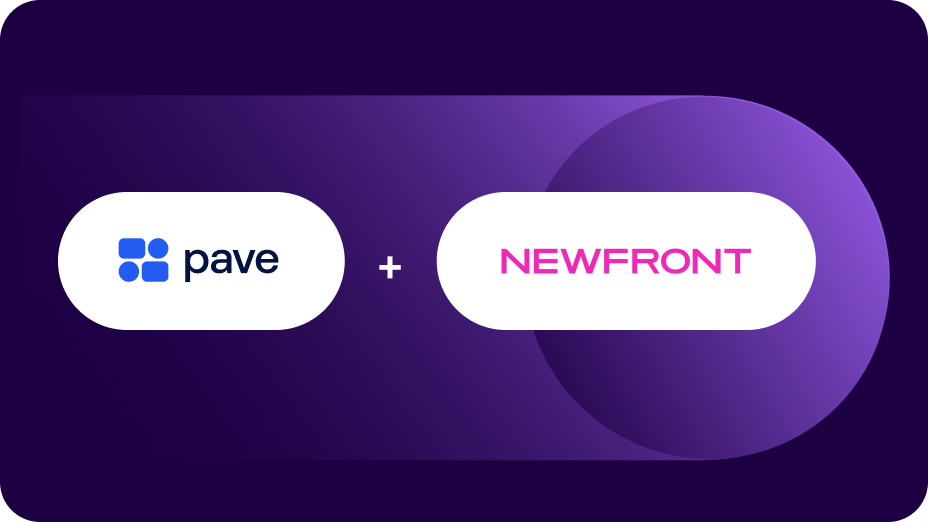Pave recently hosted a webinar on the new pay transparency laws taking effect in 2023. Speakers included Dashlane Senior Director of People Stacy Sahagian, Athena Head of People Melanie Naranjo, Rhino Senior HR Business Partner Leighton Martin, former Loom VP of People Meghana Reddy, and Pave VP of People Alexis Merritt.
The conversation included a description of the new laws, why they matter, how employers can prepare, and the potential benefits of pay transparency. Here were the key takeaways:
The New Pay Transparency Laws

Source: Meghana Reddy
California pay transparency law
Starting in 2023, California employers of all sizes must provide employees with their role’s salary range upon request. They must also maintain records of wage changes for up to 3 years during and after the end of the employment period.
California employers with 15 or more employees must additionally share salary ranges in job postings that are eligible to be performed in the state, as well as salary ranges for promotions and internal transfers.
Starting May 10, 2023, California employers with 100 or more employees must report pay data by sex, race, and ethnicity to the U.S. Equal Employment Opportunity commission annually.
New York City pay transparency law
New York City’s pay transparency law, which went into effect November 1, 2022, requires all New York City employers with at least 4 employees to share salary rangers in job postings eligible to be performed in New York City. New York City employers must also share salary ranges for promotions and internal transfers.
Washington pay transparency law
Washington’s pay transparency law requires all Washington employers with at least 15 employees to share salary rangers in job postings eligible to be performed in the state. Washington employers must also share salary ranges for promotions and internal transfers. The law takes effect in 2023.
Colorado pay transparency law
Colorado’s law requires all employers to share salary ranges for job postings eligible to be performed in the state and salary ranges for promotions and internal transfers. Colorado employers must also maintain records of wage changes for up to 2 years during and after the end of the employment period. The law takes effect in 2023.
Notably, these new laws apply to employers in other states without pay transparency if they employ at least one person in California, New York City, Washington, or Colorado.
Why the New Laws Matter
Noncompliance with the new pay transparency laws present both legal and cultural risk. On the legal side, employers that fail to comply with the new laws expose themselves to financial penalties from the state and legal action from employees.
Culturally, noncompliance could lead to an erosion of trust between employees and their employer. Employers that fail to provide employees with pay transparency, or that implement pay transparency practices poorly, will alienate employees that can now compare their organization’s pay transparency practices to that of its competitors.
Employers unsure how to proceed with the new laws should consider what they’re trying to optimize for, and what impact pay transparency will have internally and externally. Employers aiming to maintain or improve employee retention and attraction will likely need to implement robust pay transparency in order to avoid negative cultural impact and public scrutiny.
How to Prepare for Pay Transparency

Source: Meghana Reddy
Organizations preparing for pay transparency should create a compensation philosophy and identify how they’ll operationalize and communicate their philosophy throughout the organization.
- Compensation philosophy. A compensation philosophy is a framework around why you pay what you pay across various job titles and locales, how that pay changes over time, and how it compares to competitors. These inputs should be used to implement salary bands for current and future roles, and level employees within those bands.
- Operational readiness. Operationalizing the comp philosophy means determining how it manifests throughout the organization. Who gets to see what as it relates to your approach to pay? For example, do you tell employees their salary band upfront, or only upon request? Do you offer pay transparency to all employees, or only the ones in states with pay transparency laws?
- Communication. The last piece is making sure employees and their managers understand and can explain your organization’s comp philosophy. This comes from robust communication around the new laws, your company’s approach to pay transparency, and general education around salary bands and process. Communication also means educating managers and recruiters who handle employee compensation on best practices.
Here are some additional tips offered by our speakers for organizations implementing pay transparency in the coming months:
- Use the new laws to push leadership. The new laws create a sense of urgency for organizations. If you’ve tried to push pay transparency in the past and been rebuffed, the new legal and cultural penalties surrounding pay transparency should help you get buy-in from leadership.
- Be consistent with your comp philosophy. While the new laws only apply to employees in certain states, organizations should implement a uniform comp philosophy for employees in all locales. Only providing pay transparency for a subset of employees could be seen as preferential treatment, which could erode employee morale and trust.
- Education is harder than implementation. Creating bands is relatively simple given the wealth of compensation data available. Getting employees to understand and accept why they’re paid a given amount is trickier. This comes from implementing a consistent, fair, and transparent process that’s thoroughly communicated throughout the organization. Employees will be receptive if you equip them with the info they need to understand how your organization approaches compensation.
- Revisit your bands periodically. The market is constantly changing, and so should your salary bands. Have a plan in place to revisit your bands every 6-12 months to ensure they remain competitive with the current market.
- Keep edge cases in mind. What do you do if there’s an exceptional candidate who’s demanding a salary that falls outside your band for the role? Knowing what to do in these situations ensures your comp philosophy won’t fall apart when an unlikely situation arises.
- Pay transparency is an iterative process. Most organizations aren’t going to nail their comp philosophy right away. That’s okay. It’s more important to show employees you're working towards better pay transparency, and be clear about next steps. Prioritize meeting legal compliance first, and then roll out the rest over time. Also be sure to tweak your approach as feedback comes in. Remember: not every best practice will be right for your organization.
Benefits of Pay Transparency
Making your organization more transparent can be daunting, but there are also many benefits to implementing pay transparency:
- High-quality talent pipeline. Sharing salary ranges on job postings can help attract high-quality talent, given an increasing number of applicants expect pay transparency.
- Improved DEI. Sharing pay in job postings can attract folks who might otherwise have not applied, allowing you to draw from a more diverse talent pool.
- Employee satisfaction. Adopting a more transparent process around pay helps employees feel confident they’re being paid fairly, which can improve employee trust and morale.
- Decreased workload. For HR teams, pay transparency creates more operational efficiency because most compensation decisions can now be handled by recruiters and managers (assuming you’ve operationalized your comp philosophy). HR teams can also see what other organizations are paying for comparable roles, which can help them determine salary bands more easily.
Pave Compensation Bands
Pave’s new Compensation Bands product is designed for organizations seeking to establish a foundation for fair and transparent pay practices. With Pave Compensation Bands, organizations can view, edit, and share all their compensation bands, see where individual employees fall within the band, and identify employees who fall outside a given band. Compensation Bands also comes with custom permissions to control who gets to view your compensation data. Learn more about Compensation Bands.
The Future is Pay Transparency
After years with little to no accountability, 2023’s new pay transparency laws will go a long way towards eliminating the pay gap and helping employees better advocate for themselves.
As your organization goes about implementing pay transparency, remember that you’re playing an important role in making pay more equitable, which is better for everyone in the long run.
Pave is a world-class team committed to unlocking a labor market built on trust. Our mission is to build confidence in every compensation decision.





.jpg)
.jpg)
